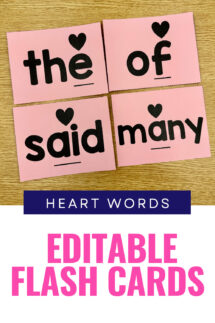Kindergarten reading passages are the perfect way for beginning readers to practice building reading fluency and reading comprehension. They use only CVC words and sight words so you can ensure to build confidence in your newest readers.
Kindergarten Reading Passages
For months I’ve had teachers email and ask me if I have anything like my All-in-One Reading Passages for beginning readers, specifically kindergarteners.

I set out to write them which was a bit of a challenge. After all, in order to help those young readers gain confidence, I needed to make sure the passages only use words students would know.

CVC Words

Each passage focuses on one CVC word family. Those words are listed at the top of the page with tracking dots underneath to promote one-to-one correspondence.
This gives students the opportunity to decode the words in isolation before encountering them in context.

This is especially helpful for students who are learning English. Research shows that frontloading, or discussing vocabulary before reading it in context, aids in reading comprehension.
After students read the words at the top, they move onto the passage.

Sight Words
Each passage ranges from 3-6 sentences. The sentences utilize the CVC word family words and sight words. It was a bit challenging to create a story with such a limited amount of words. 😉 Thankfully, I love a challenge!
Each passage also includes 1-3 picture clues in a small illustration.

Fluency
After the students read the passage, they color or mark a smiley face. They are to read the passage at least three times before attempting the comprehension questions.

I urge all teachers, parents, and tutors…do NOT skip this part. There is so much power in rereading! Your reader will build fluency and confidence. Don’t skip an opportunity to help a beginning reader build confidence!
Comprehension
Finally, students answer the multiple choice comprehension questions.
These questions are text-based, which means the answers are directly in the text. There is no inferencing or critical thinking involved.

Personally, I like to have students use crayons or highlights to show where the answer is in the original text.
This is a strategy that will serve students well as they transition from learning to read to reading to learn.

There you have it! In one NO PREP printable page, students are practicing word families, rhyming, decoding CVC words, reading sight words in context, building fluency, and increasing comprehension.
WHEW!
You’d think they would be tired after completing the page, but they’re not! They’re so excited because they were able to read a passage and answer questions about it! 😉
You can find these Kindergarten Reading Comprehension Passages in my TpT store.
What specific elements do you like for in a reading passage?
You might also like these Decoding Drills for Phonics Fluency!







